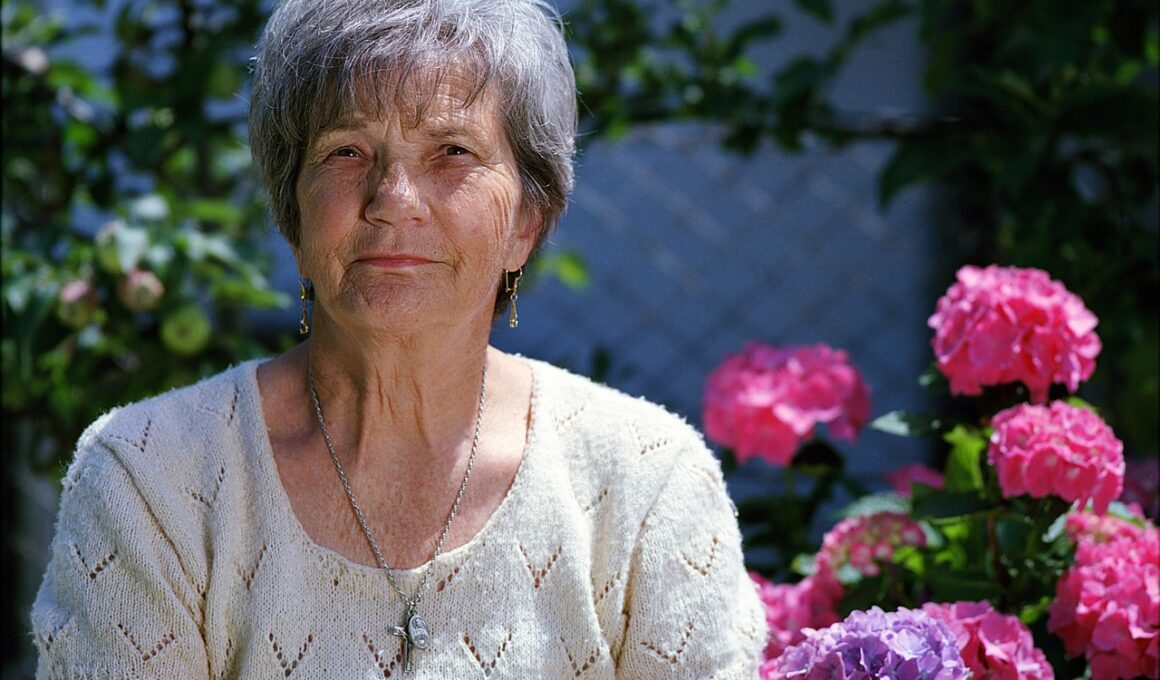Functional Training for Older Adults: Programming Tips
Functional training is an effective exercise method that focuses on enhancing the daily activities of older adults. Proper programming of functional training can provide immense benefits such as improved strength, mobility, and balance. These aspects are crucial for maintaining an independent and active lifestyle. This programming should consider individual needs and fitness levels while incorporating exercises that mimic real-world movements. A protocol based on functional training augments muscle coordination and supports joint stability, thereby reducing the risk of falls and injuries. As older adults progress, varied resistance, stability challenges, and intensity levels should be introduced. It is elemental to involve exercises that engage multiple muscle groups simultaneously, thereby improving overall functional capacity. Assessments should also be periodically conducted to modify the training program adequately and ensure continuous improvements. Furthermore, observing the participants’ responses, both physically and psychologically, is essential for optimal engagement. Setting achievable goals fosters motivation and adherence to the training regimen. Making workouts enjoyable and encouraging social interactions during sessions can enhance their mental well-being and promote a healthier lifestyle. Every aspect of a functional training program should empower older adults for better living.
The selection of appropriate exercises is vital when designing a functional training program for seniors. Exercises should be simple yet effective and should align with daily activities. A comprehensive program might include activities like squats, lunges, step-ups, and balance exercises. These movements are fundamental skills that help seniors maintain their independence. Moreover, including upper body strength exercises, such as push-ups or rows, contributes to overall body strength, which is crucial for everyday activities. Emphasizing core stability is also essential; thus, planks and bridges should be included in the regimen. Resistance bands and light weights serve as great tools for building strength without undue stress on the joints. Notably, it is crucial to promote flexibility through stretching routines after each workout, which can help prevent injuries and enhance overall mobility. Functional training also emphasizes postural awareness to support spinal health. Therefore, activities that teach proper posture can be beneficial. Regular assessments can help tailor programs to individual capabilities and ensure suitable progressions. Additionally, maintaining clear communication regarding the goals and indications of exercises can enhance the participants’ understanding and commitment.
Safety Considerations for Functional Training
When programming functional training for older adults, safety should always remain a top priority. Proper warm-up sessions are essential to prepare the body for physical activity, reducing the likelihood of injury. Instructors must monitor participants for any pre-existing medical conditions and adapt exercises accordingly. Individual fitness evaluations should be done to establish a safe baseline before commencing a new training program. Ensuring the right environment for exercises includes adequate space, proper equipment, and appropriate flooring to minimize risks. It’s advisable to provide clear instructions and demonstrations, ensuring participants comprehend each movement’s mechanics thoroughly. Moreover, emphasizing hydration and rest is crucial, as older adults might not recognize the need for breaks during exertion. Encouraging participants to listen to their bodies is fundamental; they should never push through pain or discomfort. Incorporating activities that entail functional movements is important but shouldn’t overexert individuals, especially beginners. Including cool-down exercises at the end of each session can enhance recovery. A supportive atmosphere encourages participants to voice concerns or seek assistance whenever necessary, thus fostering a safe program implementation for everyone involved.
Progression in functional training is key to sustained improvements and engagement for older adults. Once participants become comfortable with their exercises, incremental adjustments should be made. This approach not only enhances strength and endurance but also retains interest. Adapting the variables of training, such as increasing resistance, varying tempo, or modifying the complexity of movements, can provide continual challenges. This can be achieved by moving from basic exercises to more complex variants that might demand additional coordination or balance. Functional training programs could also incorporate circuit training, allowing participants to engage in diverse movements stimulating various muscle groups in one session. Such diversity fosters motivation and reduces monotony in workouts. Monitoring advancements through regular assessments or fitness tests gives participants tangible evidence of their progress, encouraging continued effort. It’s beneficial to celebrate achievements, no matter how small, to maintain enthusiasm. Refining technique and ensuring consistent engagement will lead to dependable outcomes in participants’ functional capabilities, promoting their confidence in everyday tasks. Moreover, building a sense of community within the program can motivate adherence and collectively benefit all participants involved.
The Role of Nutrition in Functional Training
Nutrition serves as a fundamental pillar supporting the effectiveness of functional training in older adults. Balanced diets contribute to improved physical performance, energy levels, and overall health. Older adults require adequate protein intake to support muscle repair and growth, which aligns with their functional training regimen. Including nutrient-dense foods, such as lean meats, legumes, dairy, fruits, and vegetables, can provide the necessary vitamins and minerals for optimal body function. Additionally, carbohydrates serve as the primary energy source, aiding stamina during workouts; thus, incorporating wholesome grains is paramount. Maintaining hydration is equally essential to ensure appropriate bodily functions, especially during physical activities. Electrolyte-rich beverages or foods can be beneficial post-exercise to replenish lost fluids. Furthermore, consulting a healthcare provider or a dietitian knowledgeable in senior nutrition enables tailored dietary recommendations. Supplements should also be approached with caution; individuals should seek professional advice before initiating any regimen. Emphasizing the synergy between nutrition and training can empower participants, enhancing their understanding of achieving desired fitness outcomes. Healthy eating habits should complement the physical effort of functional training, leading to a comprehensive approach towards better health.
Community engagement and socialization can greatly enhance the experience of participating in functional training programs for older adults. Group classes provide a supportive atmosphere where individuals can connect and motivate each other. The social interaction fostered within these settings not only bolsters fitness adherence but also combats feelings of isolation prevalent in older populations. Consider organizing events, challenges, or group workouts that create a sense of camaraderie among participants. Facilitating social outings or informational sessions related to functional activities can strengthen these bonds. Additionally, involving caregivers and family members in the program can provide further support and encouragement for older adults. An inclusive environment encourages sharing personal experiences and building friendships, enhancing participants’ overall commitment to their health journey. Establishing recognition programs that celebrate individual and group achievements can also help maintain motivation and enthusiasm. It is essential to create a welcoming atmosphere where every participant feels valued and included. Encourage open communication about the workouts and listen to participants’ feedback to improve the program continuously. A strong sense of community amplifies the benefits of functional training through collective encouragement, fostering a positive experience for all.
Conclusion: Empowering Older Adults
Effective functional training programming for older adults can significantly enhance their quality of life. By focusing on exercises that promote independence, strength, balance, and mobility, the rigors of daily activities become manageable. Prioritizing safety and personalized assessments ensures continued engagement while fostering a comfortable workout environment. Furthermore, integrating proper nutrition emphasizes the importance of a holistic approach to health and wellness. Strengthening community bonds through shared experiences within functional training enhances motivation and commitment among participants, reinforcing the overall program’s efficacy. Programs that offer variety, celebrate progress, and adapt to individual needs lead to sustainable fitness for older adults. The long-term goals of these programs focus not only on physical capabilities but also emotional and social well-being, ensuring older adults feel empowered. Ultimately, functional training should be viewed as a lifestyle choice rather than just an exercise regimen. By promoting regular involvement in training alongside healthy eating habits, older adults can achieve better physical health and lead fulfilling, independent lives. Through collective efforts, trainers, and participants can create a supportive journey toward improved well-being, emphasizing the integral role of fitness in enhancing overall life quality.
Engaging older adults in functional training takes care, passion, and innovation, ensuring a successful and fulfilling fitness journey. Creating an environment where older adults feel safe, valued, and empowered to take charge of their health can transform their lives significantly. By focusing on programming that suits their unique needs, we can help them thrive and enjoy the many benefit of functional training. Approaching exercise from the perspective of daily activities ensures that the workouts are relatable and meaningful. Ultimately, the goal of such programming is to equip older adults with the tools to maintain independence, improve their overall well-being, and foster a sense of community and belonging.


